DIY Mobile Pantry Cabinet
Hey Everyone, it’s been a while since I’ve actually been in the garage a.k.a. “my workshop” building things. But I am now back at it. I found myself in the position were I didn’t have any place to store small appliances and my pantry space was very limited. In fact, I have one split cabinet that is “pantryesque.” But its not a true pantry space. I absolutely hate storing things on my counters. So I headed to the most inspirational place on the web….. Pinterest hahaha. But surprisingly as I scrolled through my Facebook feed the latest build by Corey of Sawdust 2 Stitches popped up and it was absolutely perfect. It was sleek, simple and super practical with loads or storage space. My space, however, could only accommodate something half the size. Here’s what I did to modify Sawdust 2 Stiches’ Free Standing Pantry plans to fit a smaller space.
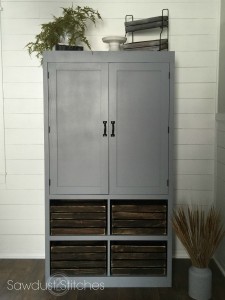
Materials
- 2- 3/4″ plywood sheets (sanded or unsanded depends on weather you will paint or stain your cabinet)
- 1- 1/2″x 2″x4″ sanded project plywood (For the door)
- 1/4″ plywood for back panel
- 1 1/4″ Pocket Screws
- 1″ pocket Screws
- 5 – 1x2x8
- 2- 1x3x8
- wood glue
- 4- 3″ Swivel Casters (2 with wheel locks)
- Door hinges
- 2 – 1/2-in Dia Copper Plated Steel Bell Hangers
- 5/8 wooden dowel
- Gripper Primer Sealer
- 1 qt. #MQ4-17 Pageant Green Interior/Exterior Paint
- 1 qt. #MQ3-23 Statuesque Interior/Exterior Paint
Cut list
- 3/4″ Plywood for the cabinet sides and shelves
- 2- 19″ x 75 1/2″ – Sides of cabinet
- 3 – 20″x 9 1/2″ – Upper shelves
- 2 – 19″x 20″ – Lower shelves
- 1 – 21 1/2″ x 75 1/2″- Back panel (can use 1/2″ or 1/4″ plywood for the back panel)
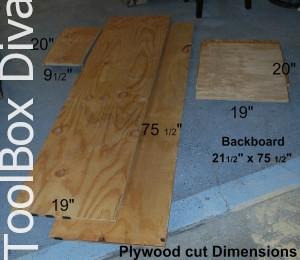
Face Frame
- 2 – 1×2 cut to 75 1/2″
- 2 – 1×3 cut to 18 3/4″
- 2 – 1×2 cut 18 3/4″
- 3 – 1×2 cut 20″ (Attached to the upper interior 3 shelves)
For the Door
- 1/2″ plywood cut to 16″ x 43 1/4″
- 2 – 1×3 cut to 48 1/4″
- 2 – 1×3 cut 16″
Tools
- Kreg Jig
- Kreg Rip-Cut
- Circular saw
- Impact Driver (Drill)
- Miter Saw
- Sander
- Brad Nailer
OK Let’s get dirty!
I start by cutting the plywood for the sides of the cabinet adjusting the width down to 20 inches. I lined the two side panels side by side to mark off the line for each shelf. This was something I like to do when making bookcase to ensure I have everything evenly lined up. I start by marking the line for the lower shelf. I am using 1x3s in my build versus 1x4s so my first shelve starts at 2.5 inches. The reason for my use of 1x3s versus 1×4 non other than I have a lot of 1x3s on hand. I’m a huge advocate of using what you have.

Once the shelves are marked off on both side panels using pocket screws I attach the shelves to one panel starting with the lower shelves and and working my way to the upper shelves making sure each attached board is square.
Once the shelves and side panels are all attached an in place I attach the back panel. For the back panel I used 1/4″ plywood attaching it using a nailer. However, the back panel could very easily be 3/4″ or 1/2.” But again in the situation I used the materials I had on hand, eliminating the need of having to purchase anything.
Before turning the cabinet upright I attached 3in. coasters to the bottom and attached the face frame.
Using pocket screws I made the face frame and attached it to the cabinet using the nailer.
For the doors I opted for making the shaker style door using Ana White’s plans for an easy shaker style panel door using pocket screws. It was way easier than breaking out the router and making those cuts. I wanted to keep this project as simple as possible.
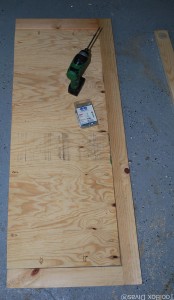
Once everything was done I applied wood filler to the nail holes and sanded the cabinet and door down.

After sanding I was ready to prime and paint. It’s very important, especially when using a rough grade plywood to use a good primer prior to painting.
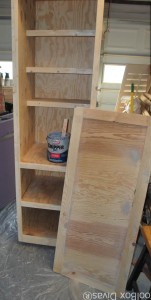
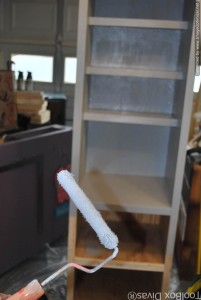
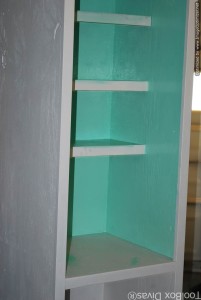
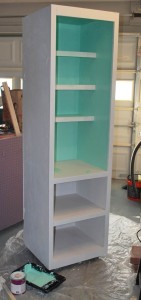
Once the cabinet was dry I attached the door.
I made the handle for my cabinet using a 5/8 wooden dowel and 2 1/2 in. bell hangers. Because I had the wooden dowels on hand the cost for the handle was under $2. Here is how I made the handle for the cabinet.
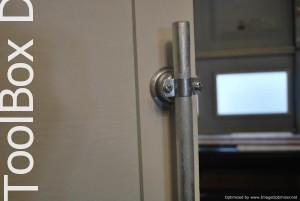
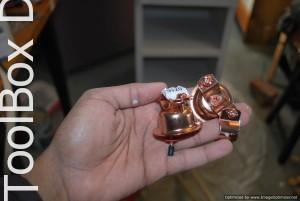
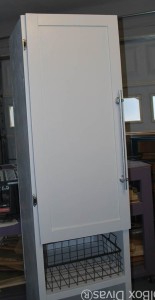
Inside the cabinet door I installed wire organizers. I also attached another wooden dowel to the side of the cabinet for additional storage. I was thinking I would store the broom on the side of the pantry using an S hook.
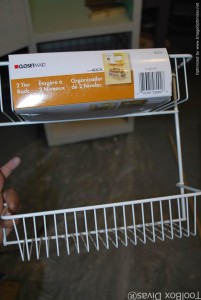
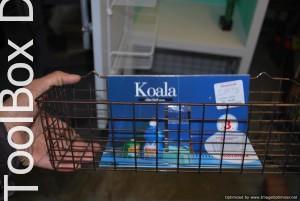
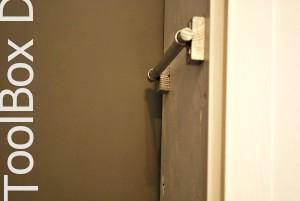
And that’s it. I was ready to push my cabinet into place and load it with my favorite things like my new favorite kitchen appliance, my Hamilton Beach Stand Mixer.

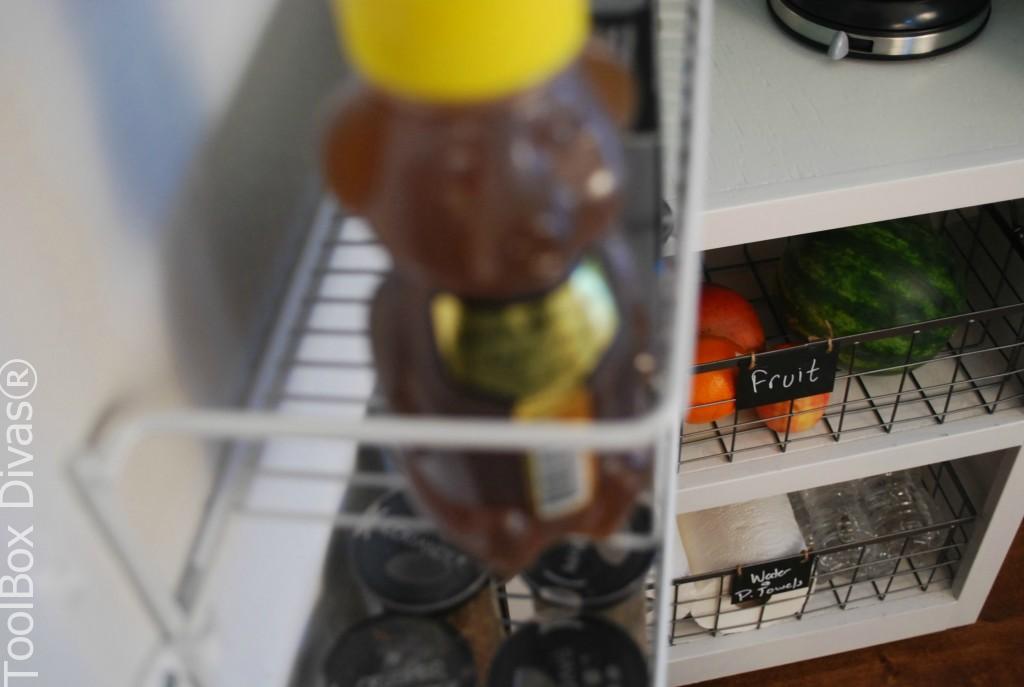
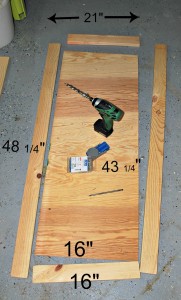
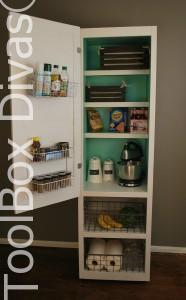
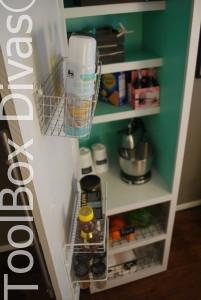
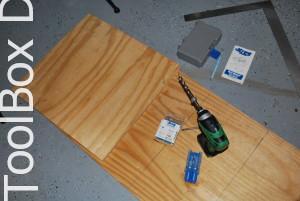
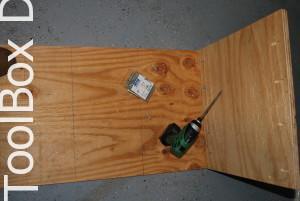
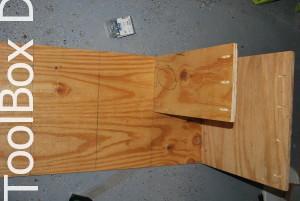
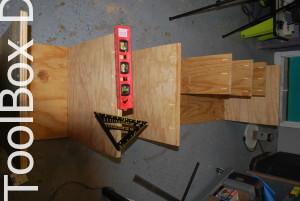
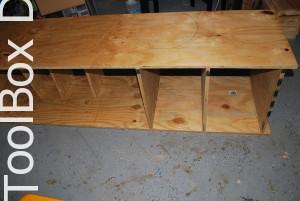
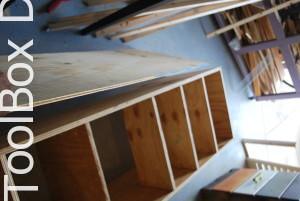
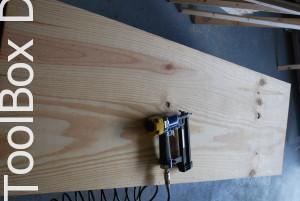
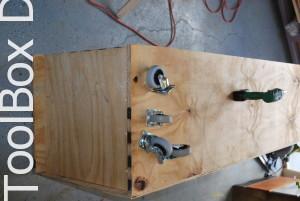
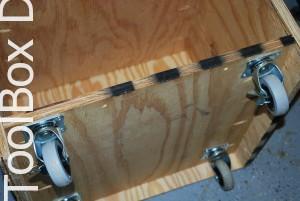
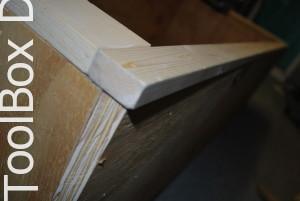
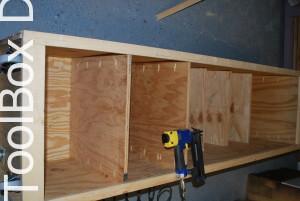
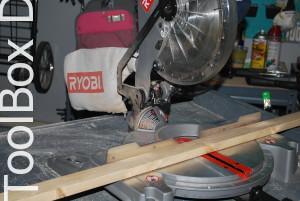
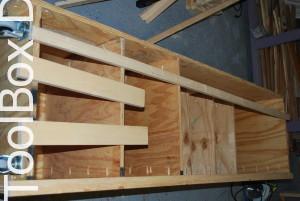
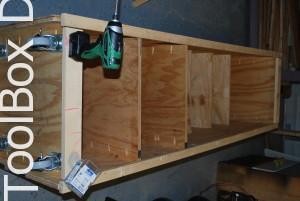
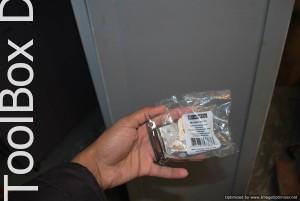
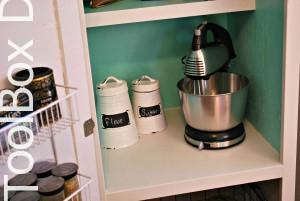
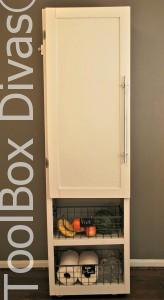
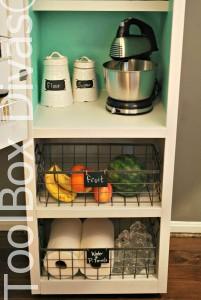
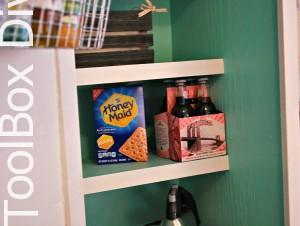
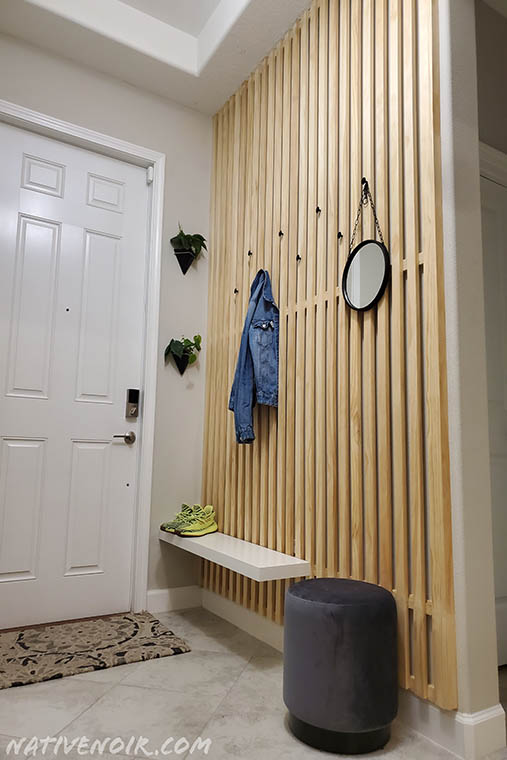
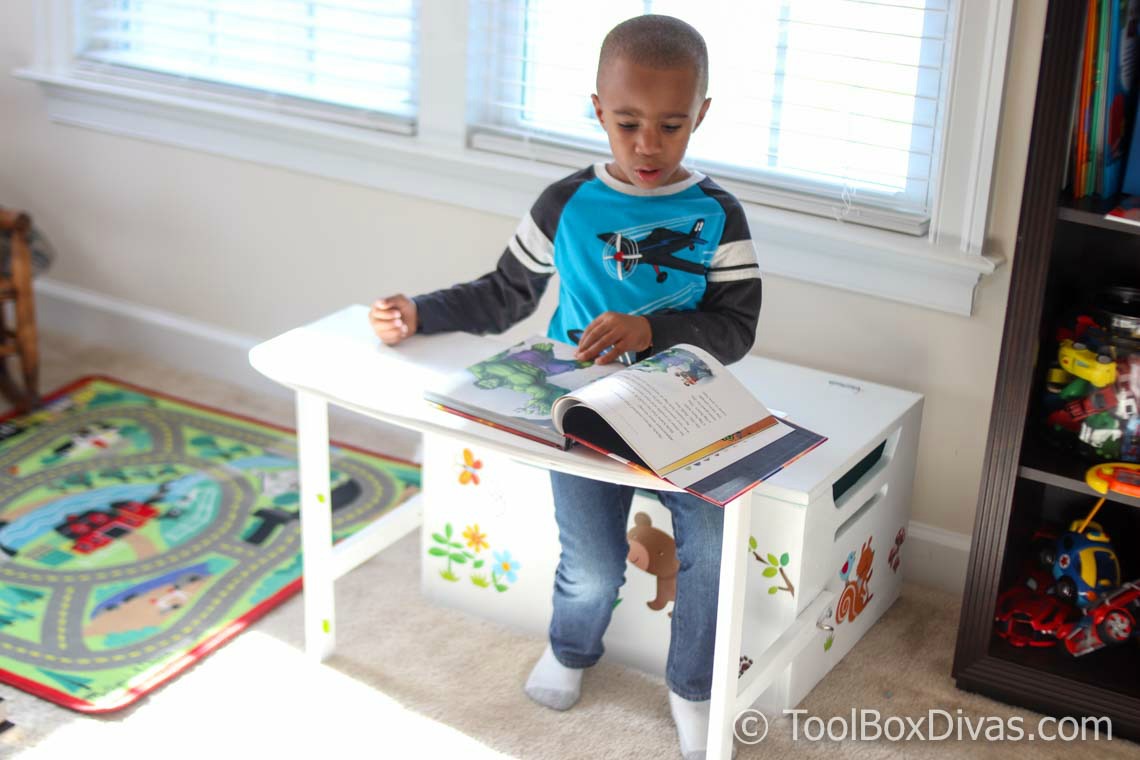
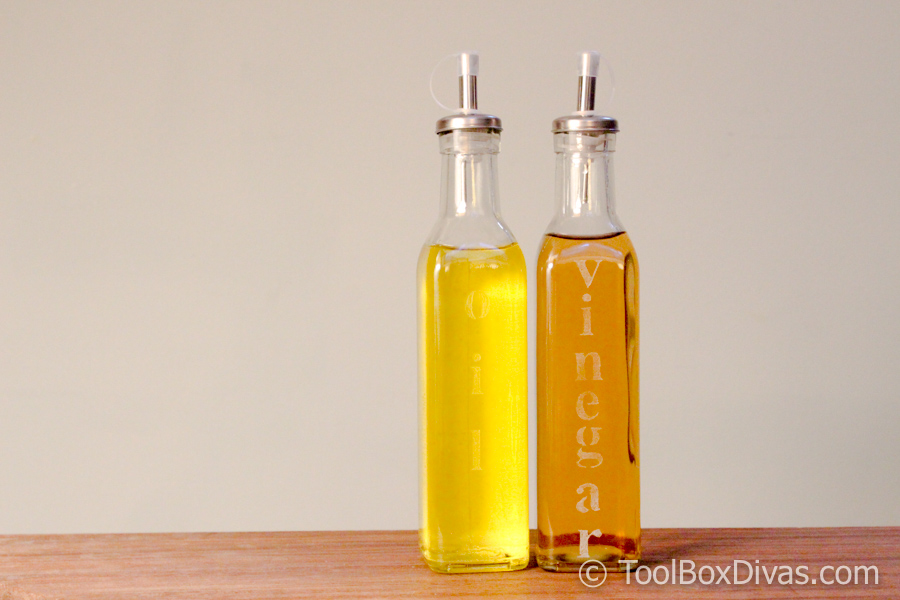
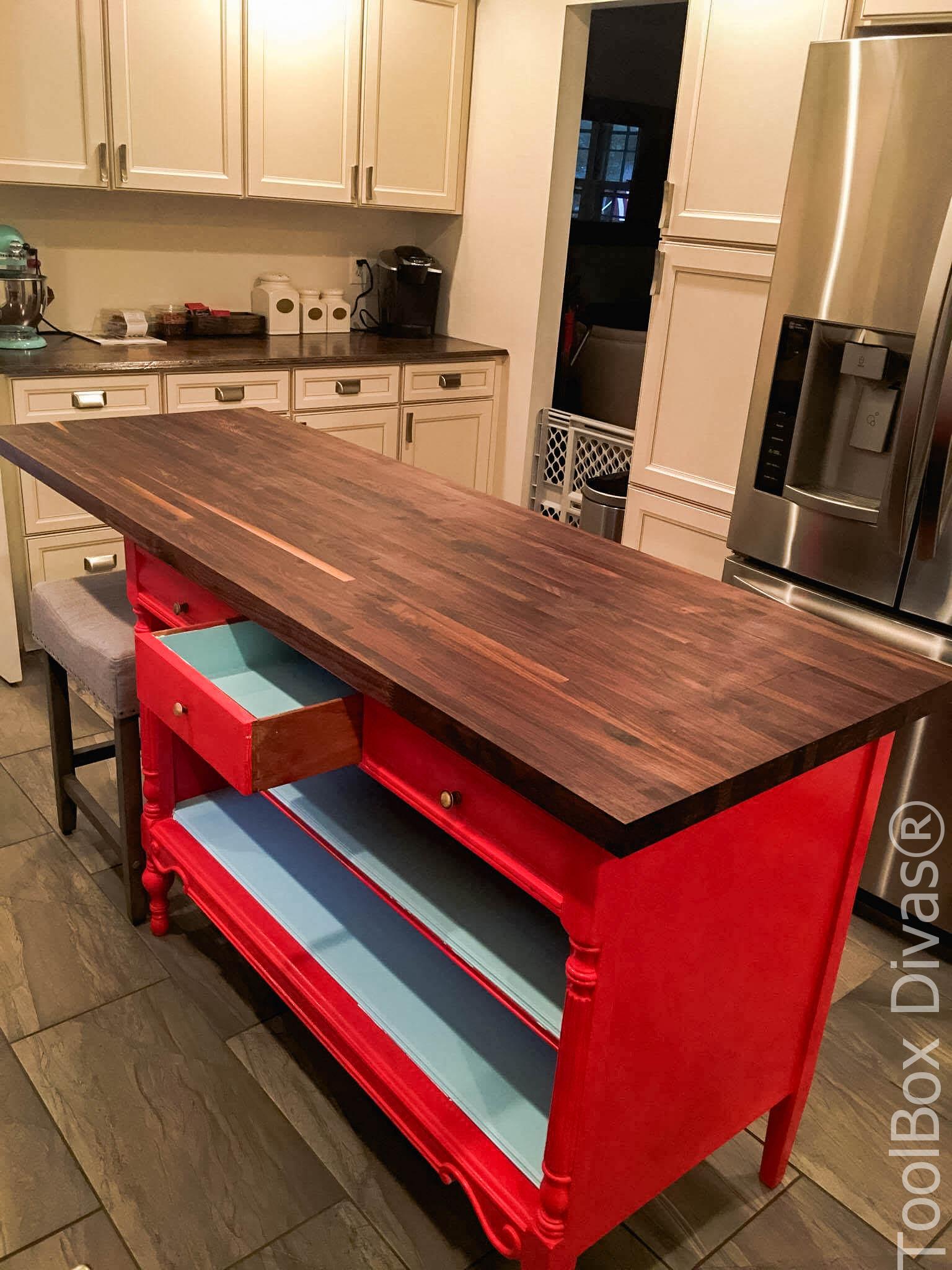
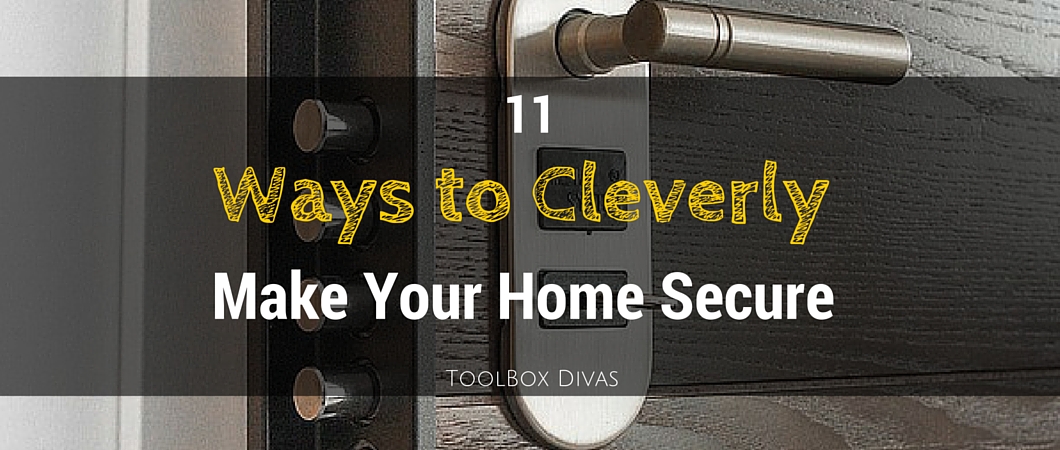
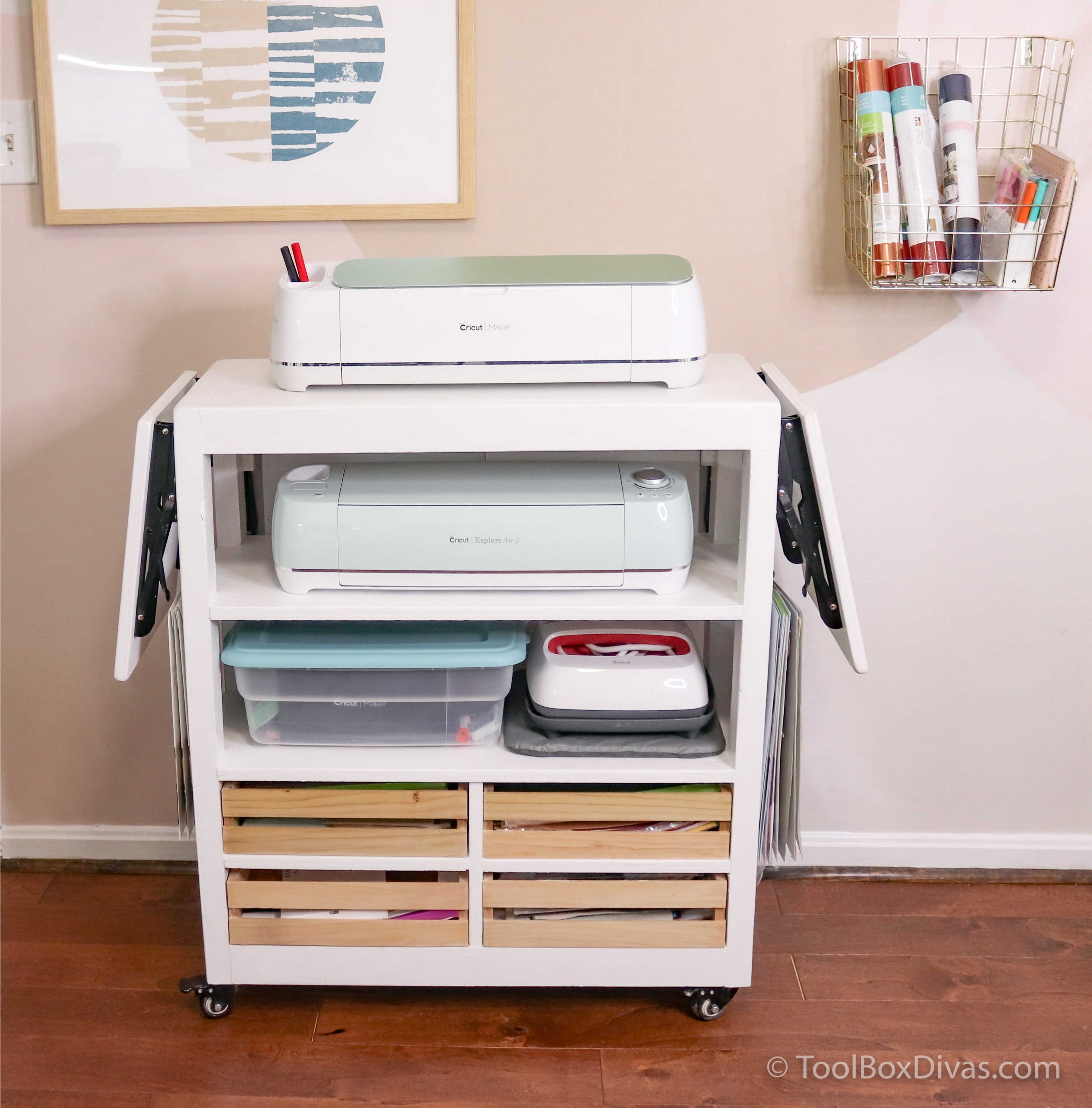
What a fun and functional project! And so simple!
Thank you so much Ash! I’m so happy you enjoyed it.
Awww how cute! I love how you modified the plans to make it fit your needs! Adorable! Thanks for linking up with us at Welcome Home Wednesdays last week… we can’t wait to see what you link up with us tomorrow!
Thank you so much Betsy! I will definitely be back.
Really cool! I love it. Thanks for sharing.
Thank you so much! So glad you enjoyed the post.
I love this idea. My kitchen isn’t big enough for one, but I’d like to do some unfinished ones for my basement “craft clutter”. I do not have a Kreg pocket hole system. After researching it, I know that the system is quite expensive. Is there an alternate way?
Hi Mary,
Thank you so much! There is a Kreg pocket hole jig that is under $30. This is what I used for the first 2 years. However, you can always use Spax screws. It doesn’t require and predrilling. It can be found at your local Home Depot in the nail/bolts section. You will probably need to consider some sort of corner support when completing a project like this with straight screws. Please keep me posted on what you decide.